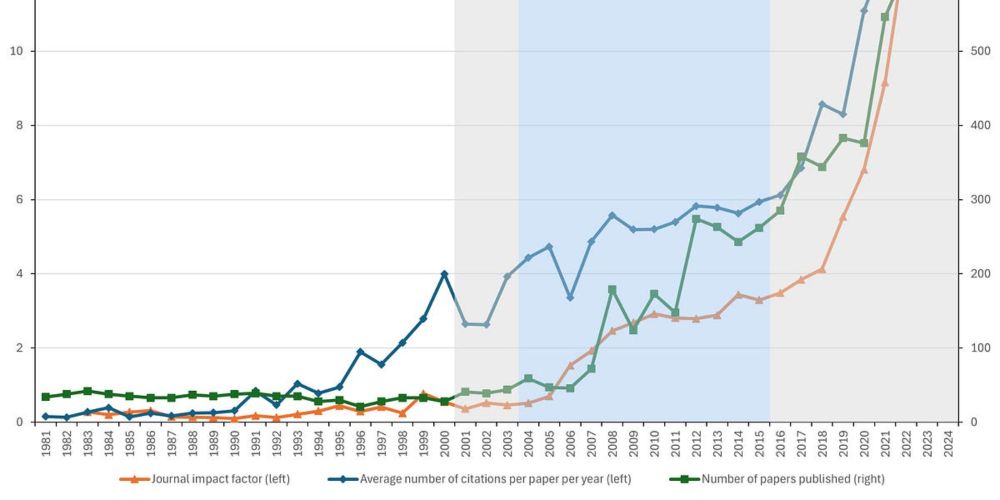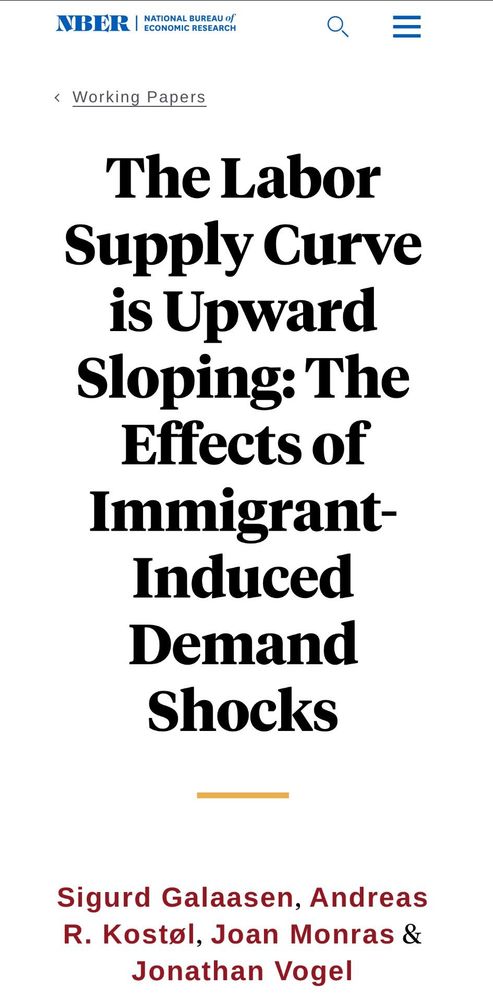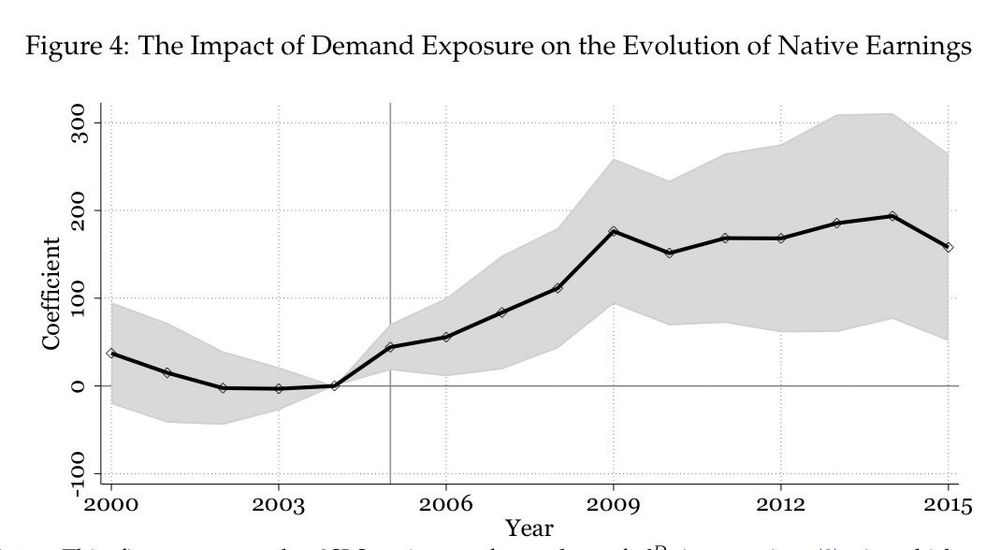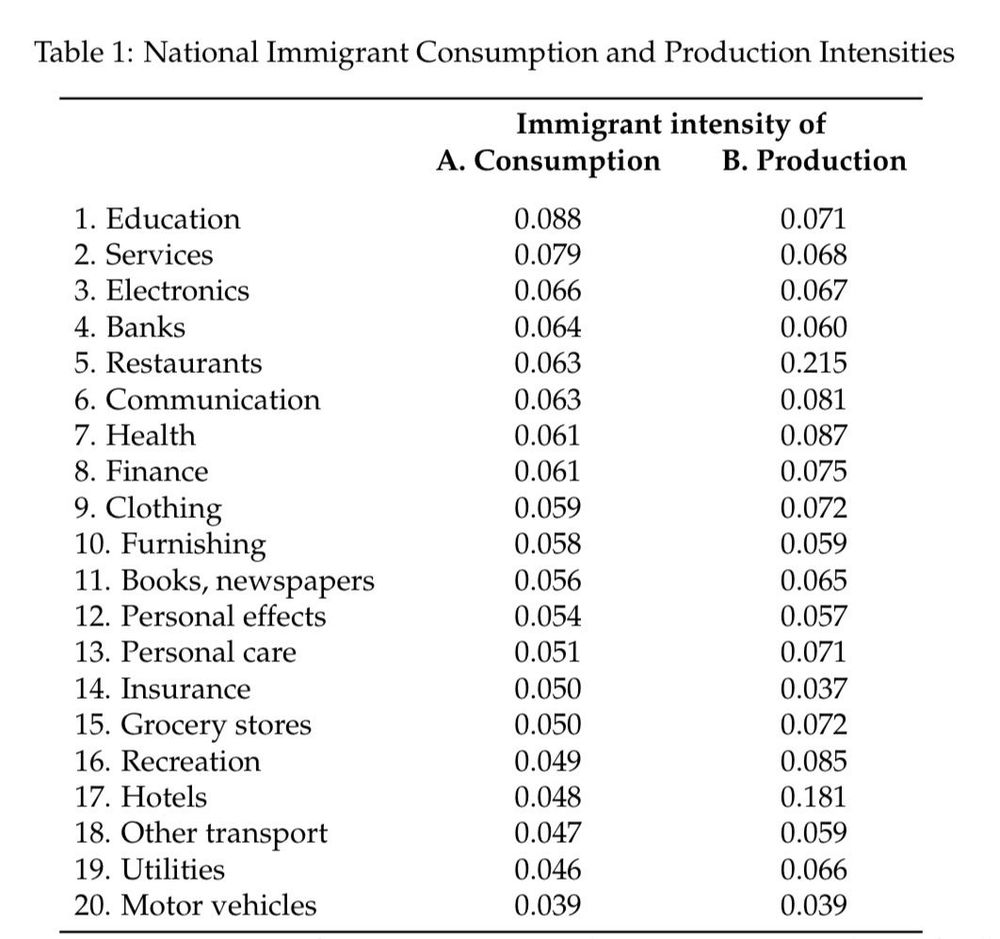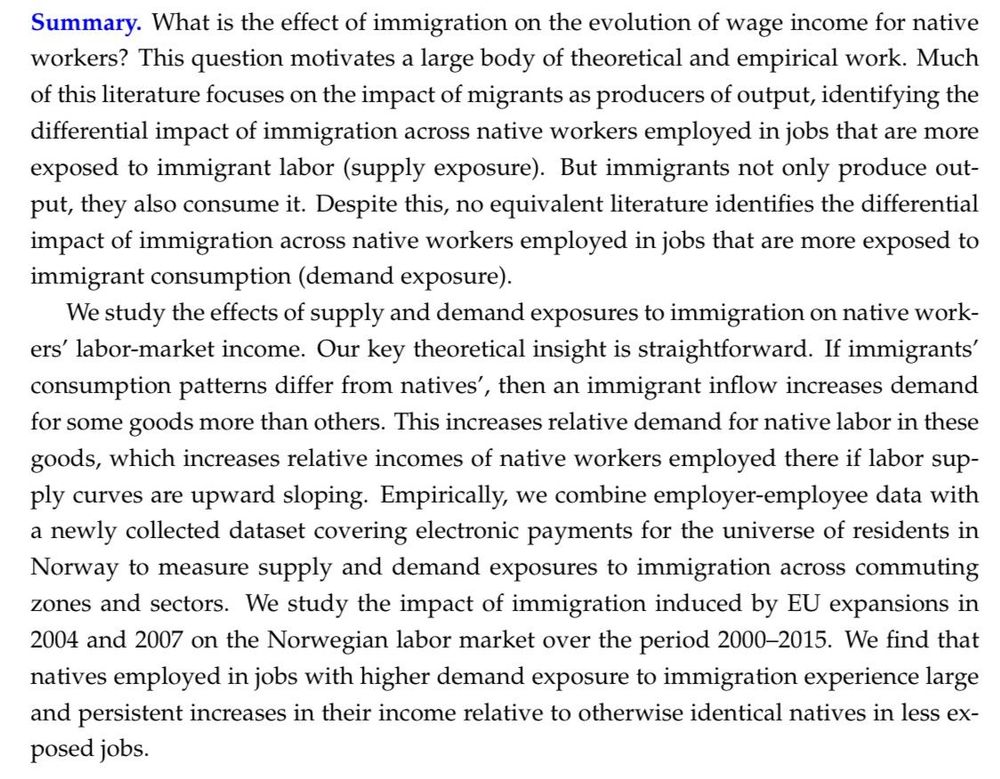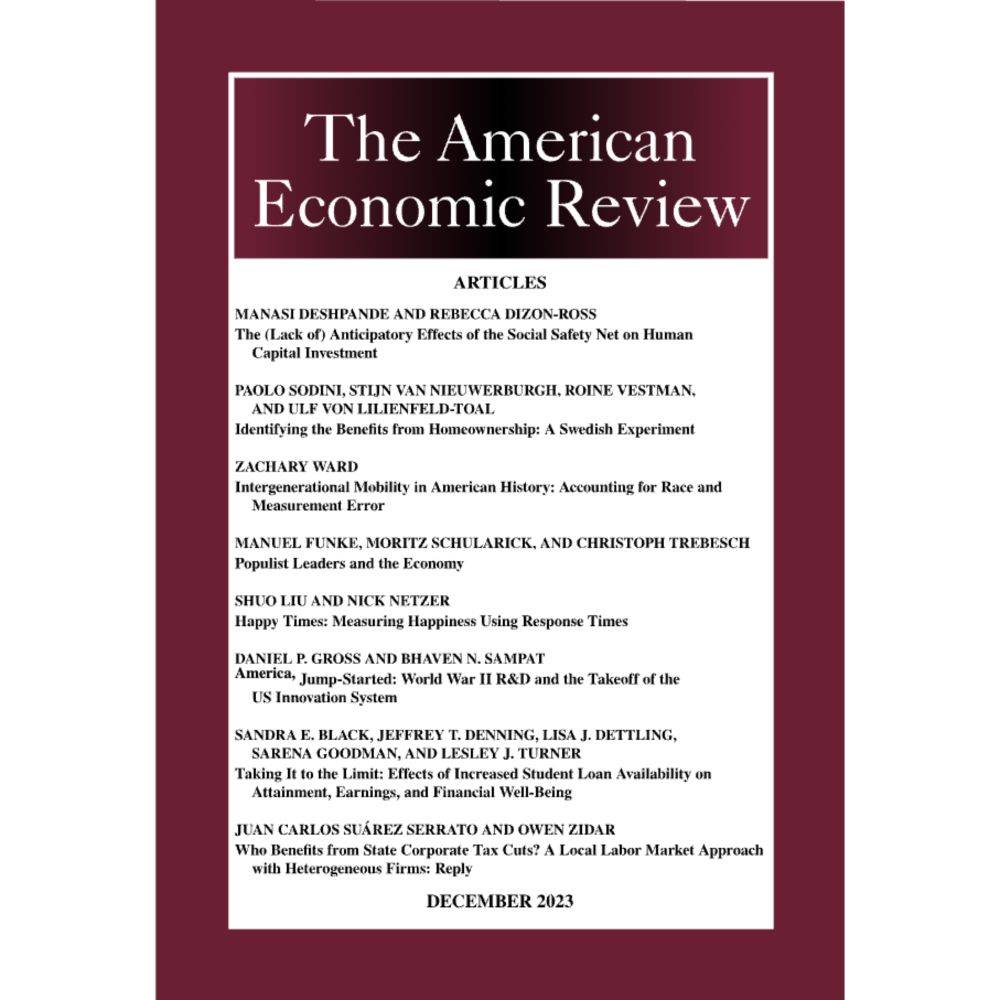Handelsblatt
Betriebserben ist dank eines Steuerprivilegs (aka Verschonungsbedarfsprüfung) seit 2021 #Erbschaftsteuer in Höhe von 7,6 Milliarden Euro erlassen worden. Vermögen in Höhe von rund 24 Milliarden Euro wurden so nahezu steuerfrei auf die Erben übertragen.
hbapp.handelsblatt.com/cmsid/100160...
07.10.2025 20:44 — 👍 44 🔁 20 💬 2 📌 1

Our first seminar is tomorrow! Tune in to hear @tamarabogatzki.bsky.social present!
🕛 Sept 30 at 5:30pm CET
➡️ Zoom registration: us02web.zoom.us/webinar/regi...
29.09.2025 15:56 — 👍 2 🔁 4 💬 0 📌 1

Which Reference Groups Matter and How? A Relative Income Information Experiment with Administrative Data
(Forthcoming Article)
Forthcoming in AEJ: Applied Economics: "Which Reference Groups Matter and How? A Relative Income Information Experiment with Administrative Data" by Xiaogeng Xu, Satu Metsälampi, Michael Kirchler, Kaisa Kotakorpi, Peter Hans Matthews, and Topi Miettinen. www.aeaweb.org/articles?id=...
24.09.2025 15:23 — 👍 17 🔁 5 💬 0 📌 0

Hi Bluesky!
I'm excited to share my job market paper (for the 2025-26 market)!
It introduces a new extension of RDD where outcomes are entire distributions: Regression Discontinuity Design with Distributions (R3D).
Thread below 👇 (1/)
09.04.2025 15:17 — 👍 36 🔁 14 💬 2 📌 4

#Zuwanderung bringt mehr Kompetenzen nach Deutschland als durch Auswanderung abließen.
Das haben @juliogarbers.bsky.social, @gathmannch.bsky.social und @felixstips.bsky.social gemessen.
Und sie haben auch Ideen, wie der Saldo noch besser werden kann ⤵️
www.wirtschaftsdienst.eu/inhalt/jahr/...
11.09.2025 15:07 — 👍 5 🔁 4 💬 0 📌 0

How Much Tax Do US Billionaires Pay? Evidence from Administrative Data Akcan S. Balkir, Emmanuel Saez, Danny Yagan, and Gabriel Zucman
NBER Working Paper No. 34170
August 2025
JEL No. H2
ABSTRACT
We estimate income and taxes for the wealthiest group of US households by matching Forbes 400 data to the individual, business, estate, and gift tax returns of the corresponding group in 2010-
2020. In our benchmark estimate, the total effective tax rate all taxes paid relative to economic income of the top 0.0002% (approximately the "top 400") averaged 24% in 2018-2020 compared with 30% for the full population and 45% for top labor income earners. This lower total effective tax rate on the wealthiest is substantially driven by low taxable individual income relative to economic income. First, the C-corporations owned by the wealthiest distributed relatively little in dividends, limiting their individual income tax unless they sell their stocks. Second, top-owned passthrough businesses reported negative taxable income on average in spite of positive book income, further limiting their individual income tax. The top-400 effective tax rate fell from 30% in 2010-2017 to 24% in 2018-2020, explained both by a smaller share of business income being taxed and by that income being subject to lower tax rates. Estate and gift taxes contributed relatively little to their effective tax rate. Top-400 decedents paid 0.8% of their wealth in estate tax when married and 7% when single. Annual charitable contributions equalled 0.6% of wealth and 11% of economic income in 2018-20.
Akcan S. Balkir
University of California, Berkeley
akcan.balkir@berkeley.edu
Danny Yagan
University of California, Berkeley Department of Economics and NBER
Emmanuel Saez
yagan@berkeley.edu
University of California, Berkeley Department of Economics and NBER
saez@econ.berkeley.edu
Gabriel Zucman
University of California, Berkeley Department of Economics and NBER
zucman@berkeley.edu
Sorry if this was posted here already, just a hot new Berkeley Econ joint
www.nber.org/papers/w34170
05.09.2025 02:14 — 👍 117 🔁 38 💬 2 📌 2

The IZA network @iza.org will survive!!
That's such great news. Moving to Luxemburg and joining @liser.lu
I don't know details and backend stories, but I see a bright opportunity ahead
20.08.2025 14:03 — 👍 52 🔁 5 💬 1 📌 6
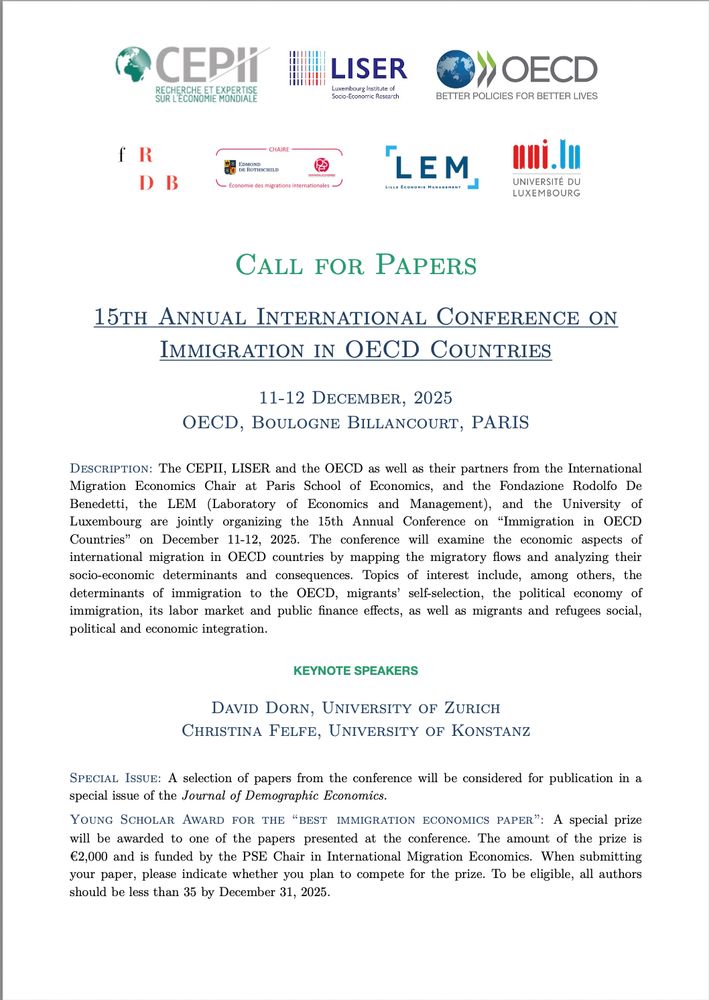
15th Annual International Conference on Immigration in OECD Countries - December 11 & 12.
Submit your paper by September 15 at:
🔗 immigoecd15.sciencesconf.org @oecd-ocde.bsky.social @cepii-paris.bsky.social @pse.bsky.social @liser-cb.bsky.social . Feel free to share!
25.07.2025 12:12 — 👍 11 🔁 8 💬 0 📌 1
I've been working on a new tool, Refine, to make scholars more productive. If you're interested in being among the very first to try the beta, please read on.
Refine leverages the best current AI models to draw your attention to potential errors and clarity issues in research paper drafts.
1/
24.07.2025 03:24 — 👍 317 🔁 86 💬 27 📌 22
Submit to the Fall 2025 Economics of Migration Junior Seminar Series!!!
17.07.2025 21:18 — 👍 2 🔁 1 💬 0 📌 0
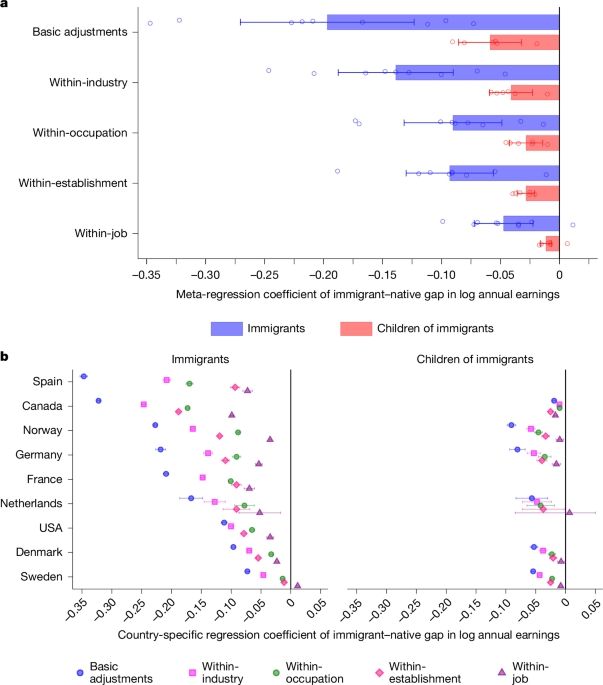
Immigrant–native pay gap driven by lack of access to high-paying jobs - Nature
Data from nine European and North American countries reveal that the disparity in earnings between immigrants and natives is largely a result of segregation of immigrant workers into lower-paying jobs...
IN OTHER NEWS: check out our new COIN paper on immigrant--native pay gaps in advanced economies published in @nature.com this afternoon! Specifically, we study the relative contribution of within-job unequal pay vs between-job segregation to earnings disparities across immigrant generations. 1/9
16.07.2025 15:16 — 👍 61 🔁 25 💬 2 📌 2
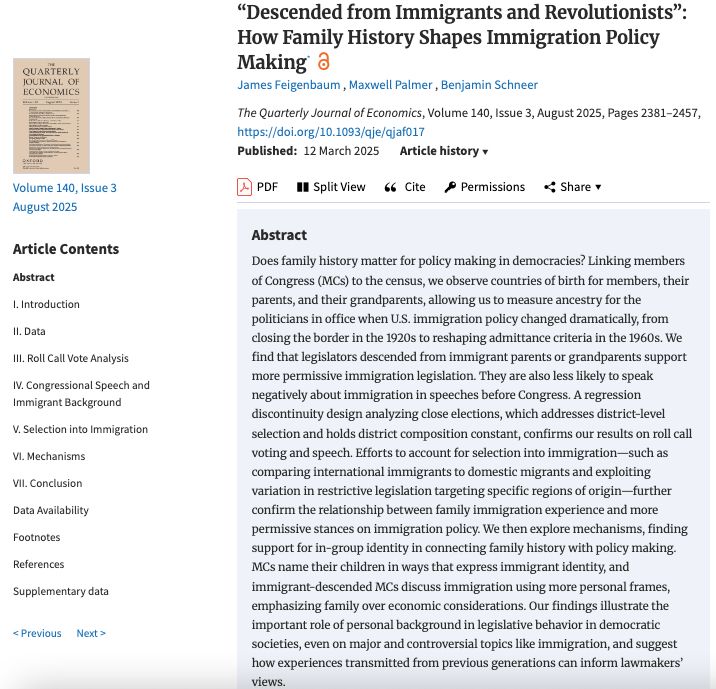
“Descended from Immigrants and Revolutionists”: How Family History Shapes Immigration Policy Making
doi.org/10.1093/qje/...
14.07.2025 02:22 — 👍 82 🔁 24 💬 3 📌 2

The 1942 Exclusion Act removed high-skilled farmers of Japanese ancestry near the West Coast. This significantly reduced long-run growth of agriculture in the affected counties, from Peter Zhixian Lin and Giovanni Peri https://www.nber.org/papers/w33971
05.07.2025 23:00 — 👍 15 🔁 9 💬 1 📌 1

A pair of similar Black and White workers do not earn the same amount at their next employer, from Isaac Sorkin https://www.nber.org/papers/w33946
01.07.2025 17:00 — 👍 25 🔁 6 💬 1 📌 1
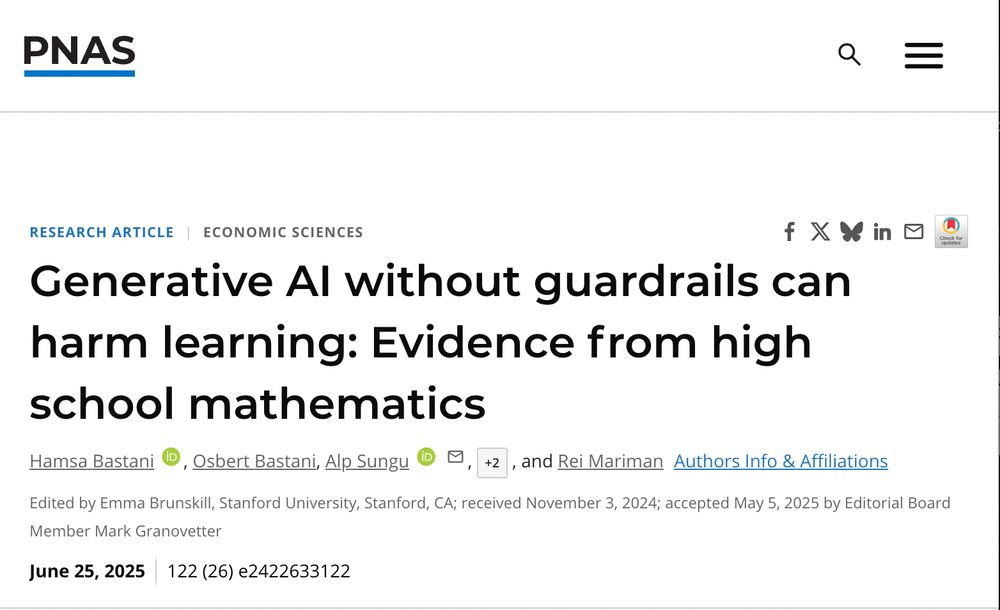
Out in @pnas.org today!! We ran a field experiment with ~1000 high school students & found:
✅ GenAI tutoring boosts practice perf
⚠️ But hinders human learning, hurting perf when AI access is removed
🛡️ Safeguards like hint-based help can offset this
www.pnas.org/doi/10.1073/...
25.06.2025 16:26 — 👍 25 🔁 9 💬 3 📌 0

🌍 2025 #MigrationEconomics Junior Workshop just concluded.
🎯 Goal: give PhD & young researchers an opportunity to share their work in an inspiring space.
Thanks to the participants & keynotes for sharing thoughtful discussions ✨
🏷️ #DevEcon
@ucauvergne.bsky.social
@cnrs-rhoneauvergne.bsky.social
25.06.2025 14:25 — 👍 5 🔁 3 💬 1 📌 1
The Untold Story of Internal Migration in Germany: Life-Cycle Patterns, Developments, and the Role of Education
This paper examines internal migration from a lifetime perspective using unique data on detailed residential biographies of individuals born in German...
Check out our new IZA DP! We show that Germans move across regions more often than many realize - especially around important educational decisions and early in their careers. However, we find no causal link between education and regional mobility👇
www.iza.org/publications... (@guidoh.bsky.social)
23.06.2025 15:07 — 👍 12 🔁 3 💬 0 📌 1
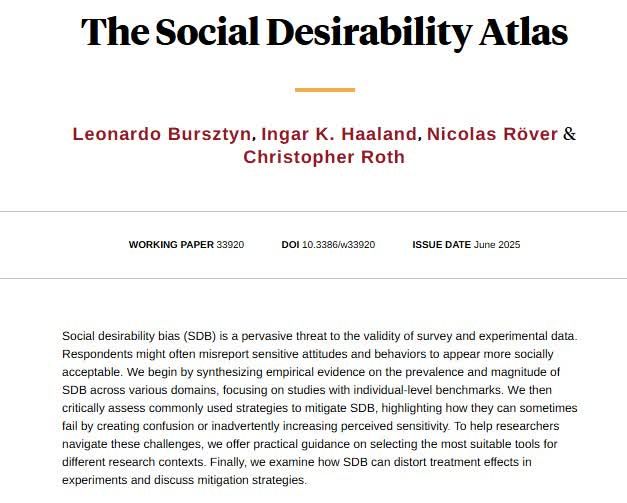
To help researchers navigate social desirability bias, this study assesses commonly-used approaches and offers practical guidance on selecting the most suitable tools for different contexts, from Bursztyn, Haaland, Röver, and Roth https://www.nber.org/papers/w33920
21.06.2025 13:00 — 👍 5 🔁 7 💬 0 📌 0

Combining field experiments and a new model to study salary negotiations, from Zoë B. Cullen, Bobak Pakzad-Hurson, and Ricardo Perez-Truglia https://www.nber.org/papers/w33903
15.06.2025 13:00 — 👍 6 🔁 2 💬 0 📌 0
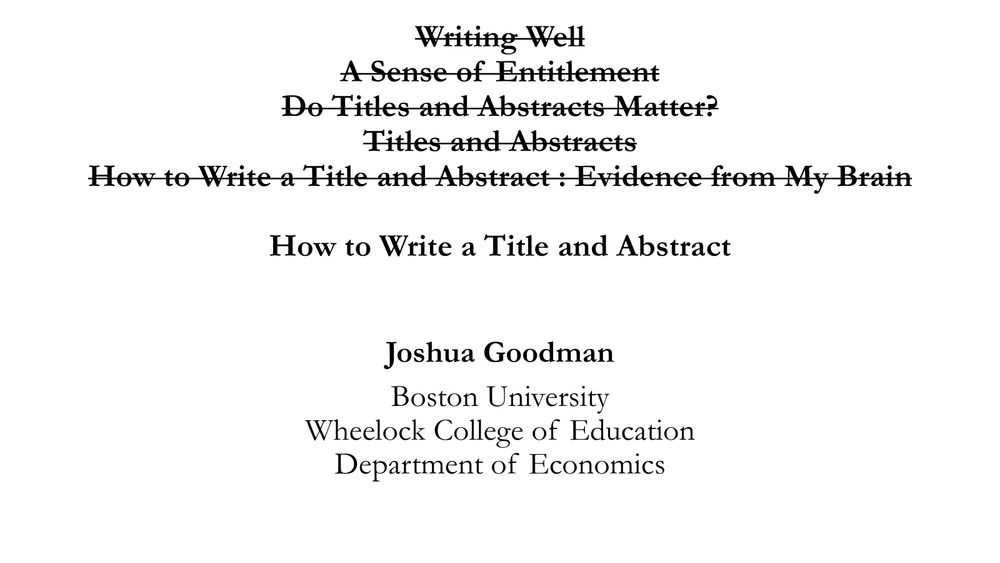
Re-upping my advice about how to write a good title and abstract for an academic paper, appropriately called:
"How to Write a Title and Abstract"
Feel free to share this thread, which will focus on titles.
#EconSky #AcademicSky
11.06.2025 16:41 — 👍 223 🔁 73 💬 10 📌 8

What happens when humanitarian aid is cut or delayed?
Humanitarian aid systems are under mounting pressure, with key donors like the US and UK cutting funding despite growing needs. New research in one of the world’s largest refugee camps shows that aid ...
🆕What happens when humanitarian aid is cut or delayed?
A 20% aid cut in one of the world's largest refugee camp didn’t just reduce what and how much refugees eat; it also triggered a cascade of effects across households and markets. voxdev.org/topic/instit...
with Vittorio Bruni and @wfp.org
12.06.2025 06:30 — 👍 21 🔁 14 💬 1 📌 0
📢 Just released: First results of our new large-scale longitudinal survey IMPa on return and onward migration in Germany. 50,000+ participants in wave 1 (Dec 2024–Apr 2025).
📄 Full report (in German): doku.iab.de/forschungsbe...
📘 English version coming soon — stay tuned!
11.06.2025 13:00 — 👍 24 🔁 5 💬 0 📌 1

💻 Jetzt anmelden: Bei der nächsten Ausgabe unseres Online-Formats „BAMF-Forschung im Dialog“ dreht sich alles um neue Datenprodukte aus dem BAMF-FDZ!
📅 Donnerstag, 26.6.2025
🕚 11 bis 12 Uhr
Mehr dazu ▶️ www.bamf.de/SharedDocs/V...
#BAMFforscht
10.06.2025 09:33 — 👍 5 🔁 3 💬 0 📌 2
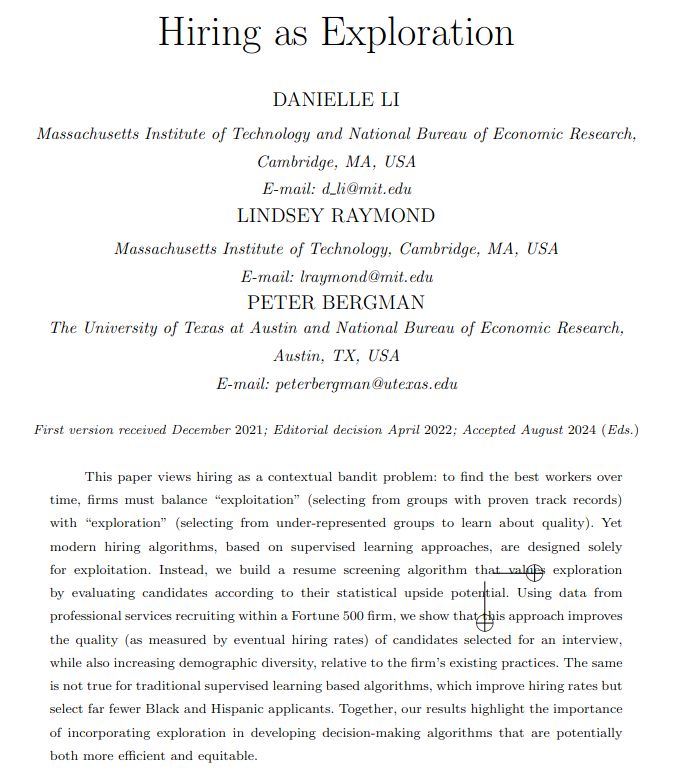
Li, @lindseyraymond.bsky.social & @peterbergman.bsky.social show that incorporating exploration into an interview screening algorithm improves demographic diversity & hiring efficiency, while traditional supervised learning-only tools improve hiring rates at the expense of minority applicants.
👇
02.06.2025 18:31 — 👍 23 🔁 6 💬 2 📌 1


We're hiring a postdoc in labor economics at IAB Nuremberg! Join @ineshelmecon.bsky.social, @jnimczik.bsky.social & me on a project about gig work.
🗓️ Start: 1 Oct 25
💶 Salary ≥ €5200/month
🌱 Possibility to apply for tenure track program
Apply here until 17 June: econjobmarket.org/positions/11...
02.06.2025 10:22 — 👍 31 🔁 27 💬 0 📌 3
PhD student in Economics at Boston University | Colombiana🇨🇴
https://jsancheza04.github.io
The objective of The Economics of Migration Junior Seminar is to give opportunity to junior scholars to present their work in front of fellow junior researchers and faculty members from a broad range of institutions.
Social Protection Economist at the OECD. Focussed on working age benefit design.
Strolling Economist 🚶🏻
https://www.howtosavedemocracy.de
Applied econ @unibo interested in genes, health, human capital. Dadx2. Lactose and fascist intolerant. he/him 📉📈
https://sites.google.com/site/pietrobiroli/
My name is Ludger. I live on the second floor.
Welcome to the lecture lounge of life
Team Bücherspeicher! ✊ 📚
Nachtschicht: https://nachtbibliothek.de/
Tagesschicht: https://tage-des-lesens.blog
Ukrainian, Economist, Postdoctoral Researcher at KSE, organizer of Workshops for Ukraine series, #RStats
https://sites.google.com/view/dariia-mykhailyshyna/main
Professor of Economics, Sapienza University of Rome | IZA Fellow, Bonn | fabiosabatini.site.uniroma1.it | Substack: https://fabiosabatini.substack.com/
Inequality, gender, territory & development economics in Latin America | Italian in Chile | Slow researcher looking for a space where ideas grow quietly and critically.
Associate Professor of Public Policy, Politics, and Education @UVA.
I share social science.
EconStor is a publication server for scholarly economic literature, provided as a non-commercial public service by #ZBW | #OpenAccess | https://www.econstor.eu/
PhD in Health and Labor Economics - RWI Essen
Postdoc at University of Rome Tor Vergata. Interested in Applied Microeconomics with a focus on Political Economy.
http://www.paulbose.com/
Econ prof (W2 tt) at @tudresden.bsky.social
Education, labor, population economics
https://sites.google.com/view/kamila-cygan-rehm
Private account
Economist | Associate Professor @University of Oxford and @UAntwerp.
https://oliviersterck.wordpress.com/
Postdoctoral research fellow @warwickecon.bsky.social | labor, gender, health | https://www.leanassal.com/
Director at @LISER_LM. Passionate about labor economics, migration and yoga. Fellow at @CEPR, @iza_bonn, @CESifo, @ZEW and @CReAM
Another economist. Applied micro, development, gender, inclusion. At CUNEF Universidad. #firstgen #feminist
https://www.mariahernandezdebenito.com/
Economics PhD candidate QMUL | From Girona 🌅🚲| First gen
Assistant Prof in Econ @uniofreading.bsky.social. Development Economist. Research Associate @odid-qeh.bsky.social
Interested in social protection, refugees, informality. 🐾



